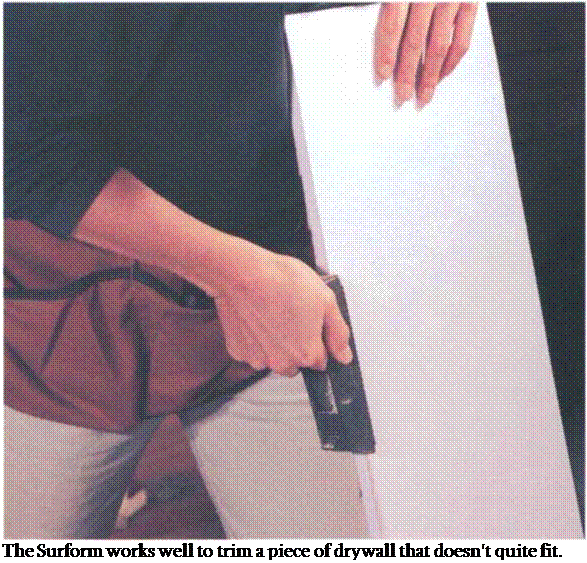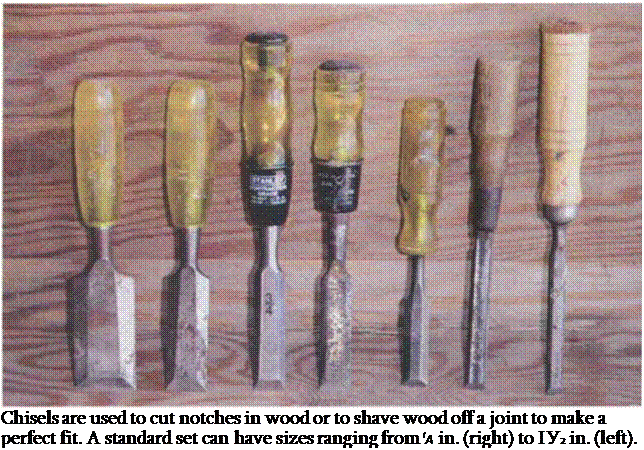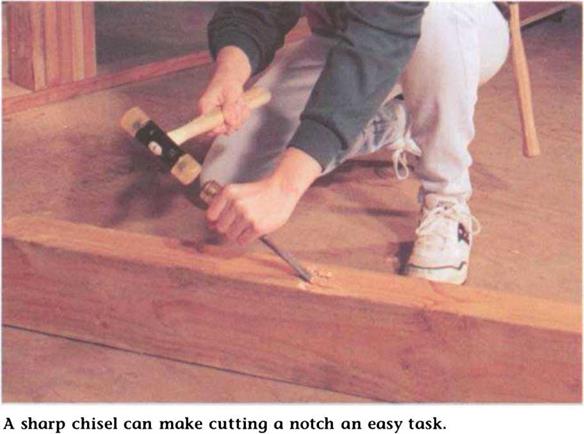Chisels
Another shaping tool that comes in handy is a chisel. A chisel is often used to cut notches in wood (such as for a lockset) or to shave a bit off a joint to ensure a perfect fit.
 Chisels come in various sizes. Most carpenters can get by with a set of chisels ranging in size from 1A in. to 1 in.
Chisels come in various sizes. Most carpenters can get by with a set of chisels ranging in size from 1A in. to 1 in.

Using a chisel As with a handplane, sharpness is essential when working with a chisel. A dull blade is dangerous and makes it difficult to achieve a smooth, clean cut. To keep the chisel sharp, don’t use it as a screwdriver or as a pry bar.
A chisel has a straight side and a beveled side. When cutting, keep the beveled side facedown into the cut. Point the blade of the chisel away from your body to help prevent injury in case of a slip.
To protect the chisel handle, many carpenters use a mallet rather than a hammer to hit the chisel (see the top photo on p. 20). For best results, cut with the grain—otherwise, you’ll tear out chunks of wood.
 When not in use, protect the chisel’s cutting edge with a couple of loops of electrical tape or wrap it in a clean cloth.
When not in use, protect the chisel’s cutting edge with a couple of loops of electrical tape or wrap it in a clean cloth.
Files and rasps are also handy items to keep around the job site. Files come in many different sizes (from smaller than a pencil to longer than a hammer), shapes, lengths, and cutting ability (roughness). Originally designed to shape metal, files can be used to smooth and form other materials as well, including plastics (such as Formica) and wood. Their teeth are shaped to cut on the push stroke. A good beginning set should include a three-cornered file, a flat one, and a round one.
|
Rasps have larger teeth than files do and are designed to remove a lot of wood. They, too, come in various sizes and shapes. A good rasp for a carpenter to own is the four-in-hand rasp. It has one flat side and one oval side, with four different cutting surfaces.
The cutting teeth of a file or rasp will eventually get plugged with metal or wood. When this happens, clean the teeth with a file card, which is a tool with short, stiff bristles that can remove any gunk with a few strokes.







Leave a reply